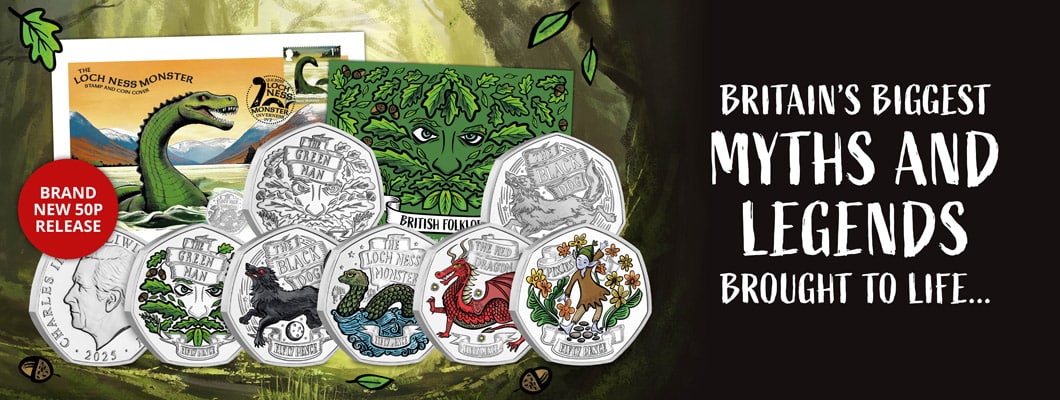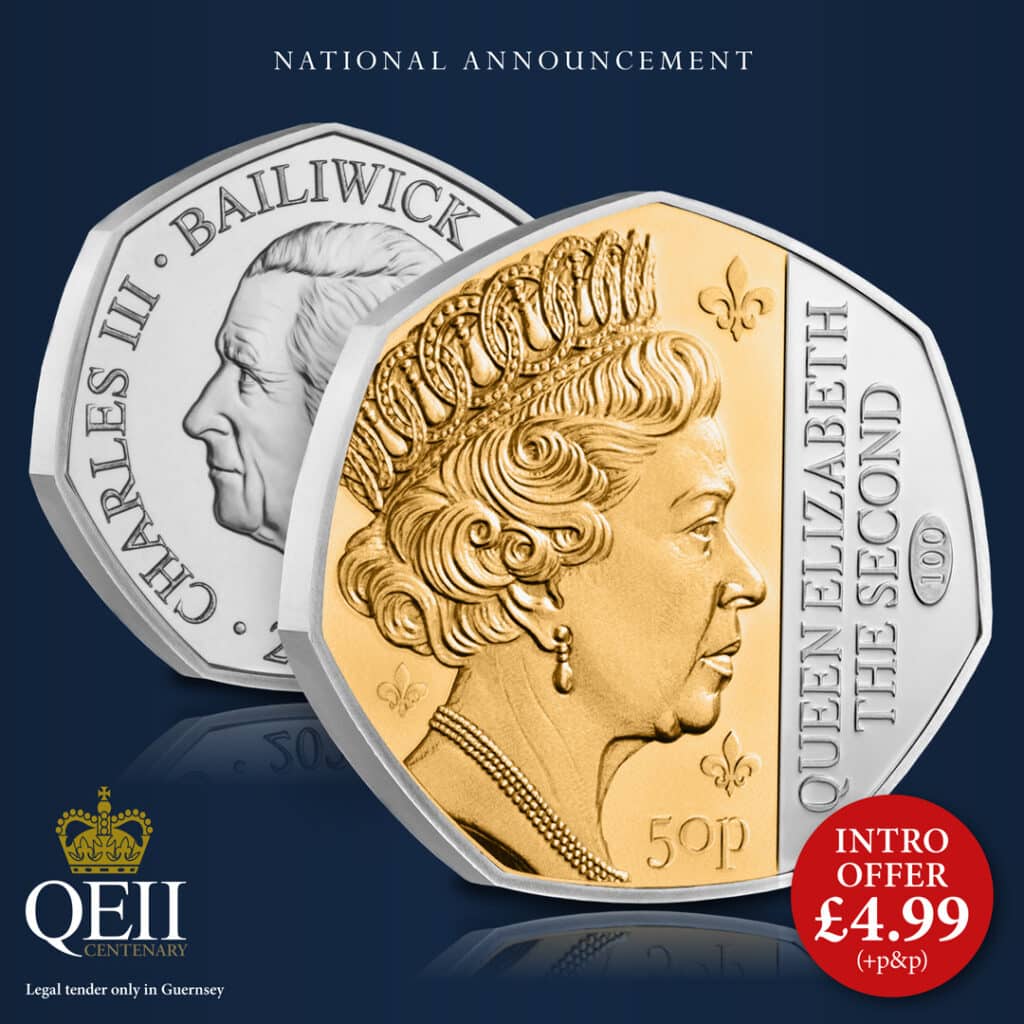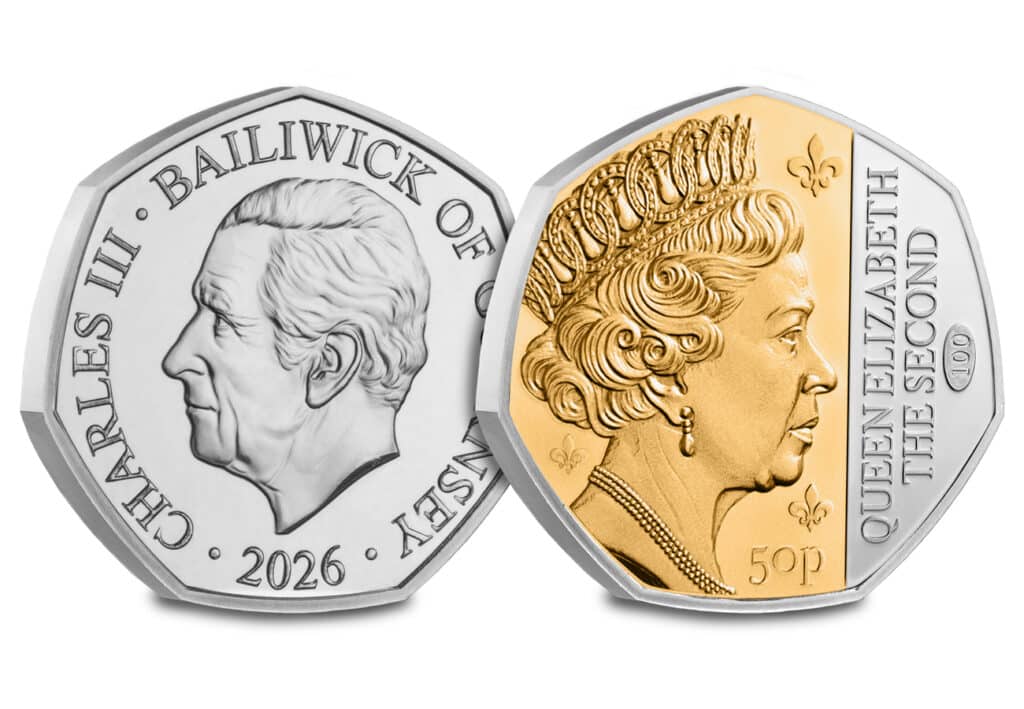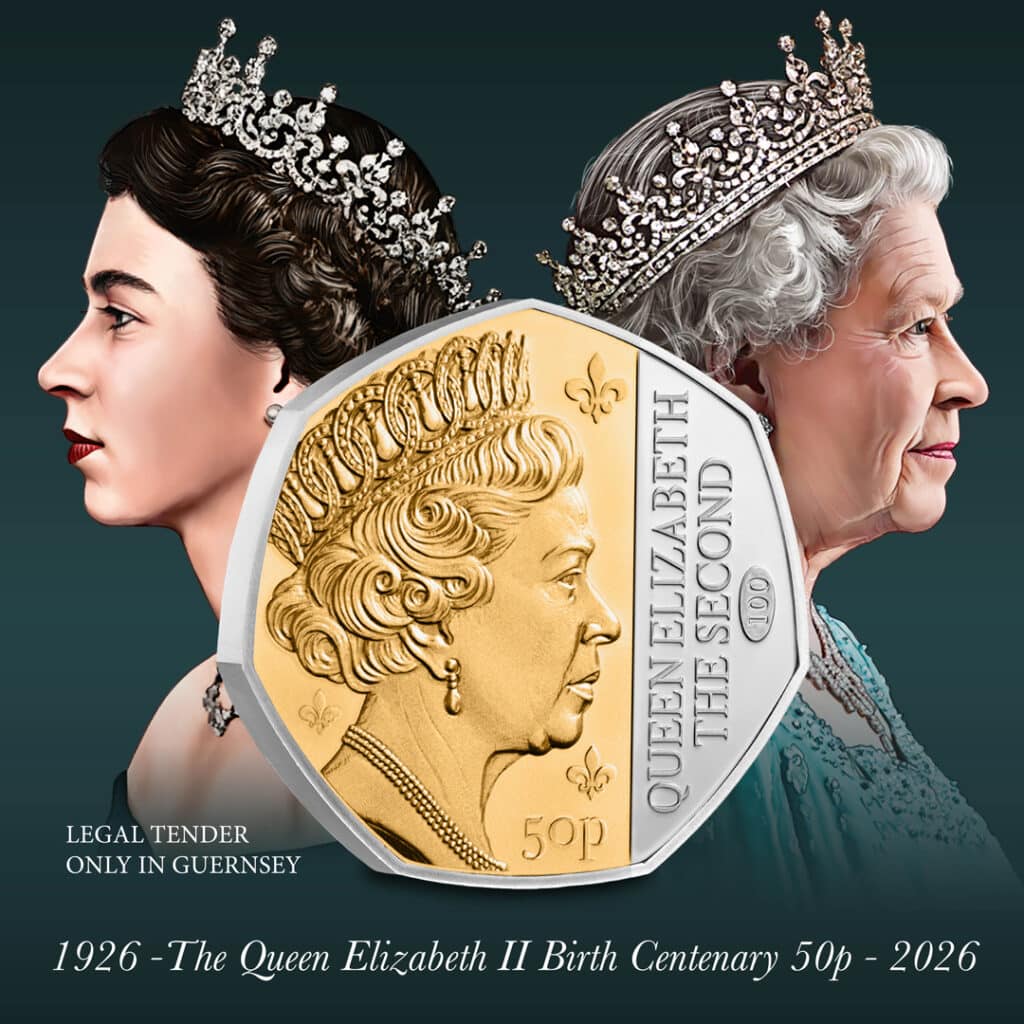Britain’s BIGGEST Myths and Legends Come to Life on BRAND NEW 50p Collection
Stories of mysterious creatures and magical beings have blurred the lines between fact and fiction for centuries…
And now, FIVE of Britain’s BIGGEST Myths and Legends have been brought to life on a BRAND NEW Official 50p Coin Collection.
And in this blog, I’m going to give you a closer look at these five enchanting designs from British folklore…
1. The Loch Ness Monster – A Global Mystery
From the shadowy waters of Scotland’s Loch Ness emerges one of the world’s most famous mysteries: The Loch Ness Monster. With over a thousand reported sightings yet no definitive proof, “Nessie” has kept the world captivated for centuries.
And this release marks a big collecting first – the WORLD’S FIRST Loch Ness Monster 50p Coin!
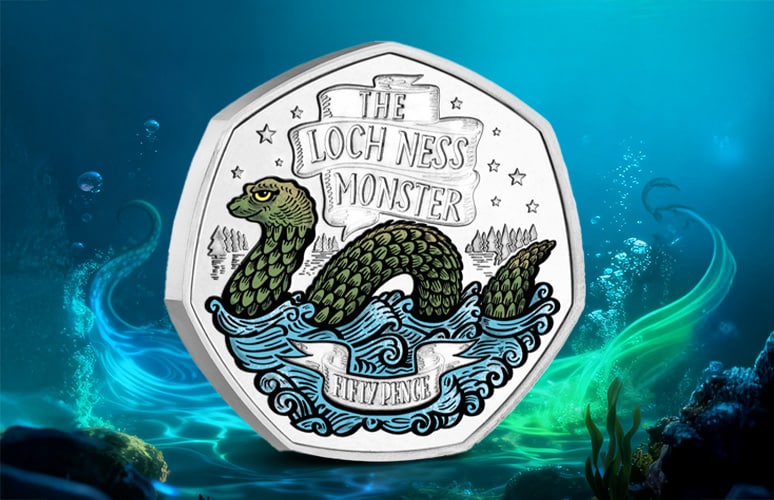
2. The Green Man – The Guardian of the Forest
Hidden among leaves and vines, The Green Man is an ancient symbol of renewal and our connection with nature. As guardian of the forests, he embodies life and seasonal rebirth.
The Green Man has even made a modern day appearance on King Charles III’s Coronation Invitation.
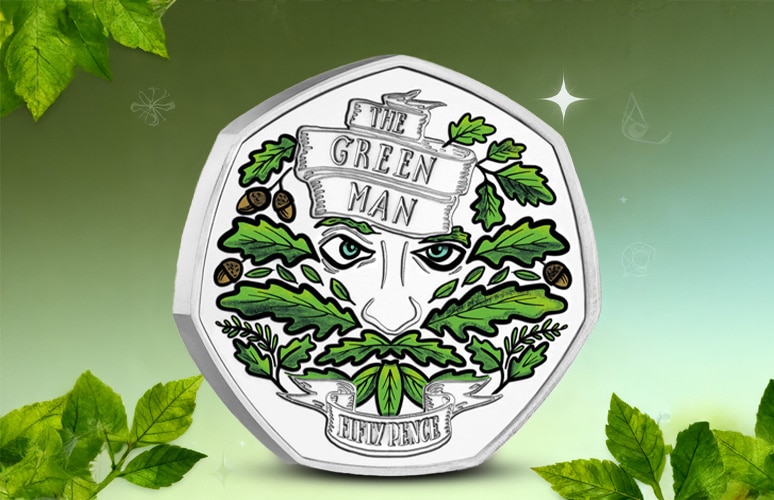
3. The Black Dog – Half Protector, Half Omen
Third and most frightening – The Black Dog. Said to haunt lonely roads of East Anglia, this ghostly hound is part protector, part omen of upcoming misfortune.
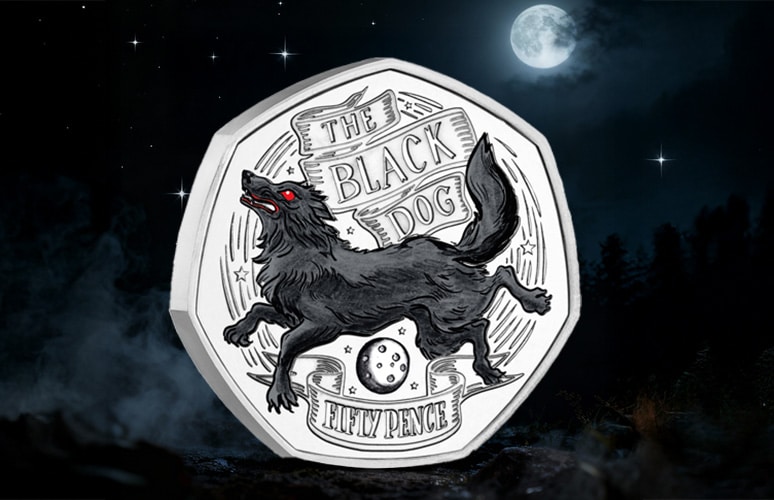
4. The Red Dragon – The Heart of Wales
From the heart of Welsh mythology comes The Red Dragon, whose legendary victory in battle made it a lasting emblem of pride and strength.
Today, the Dragon still flies proudly on the Welsh flag.
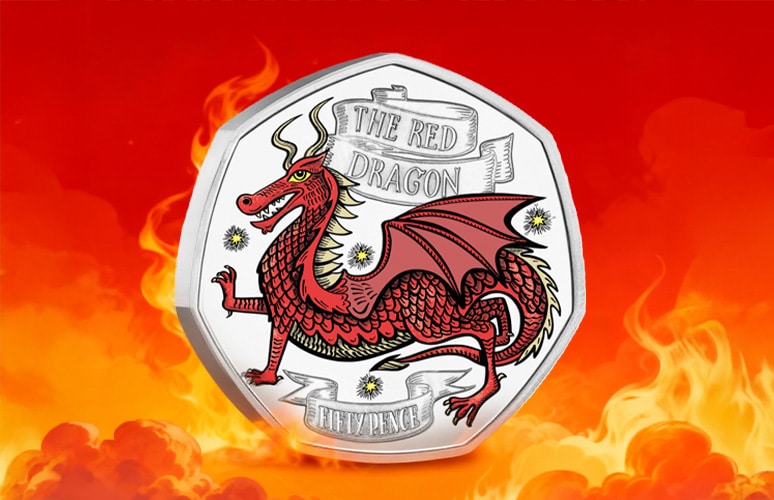
5. Pixies – The Mischievous
No collection of British folklore would be complete without The Pixies – the playful spirits of the West Country. Known for leading travellers astray and causing mischief, these tiny tricksters bring a touch of fun and fantasy to the BRAND NEW 50p Collection!
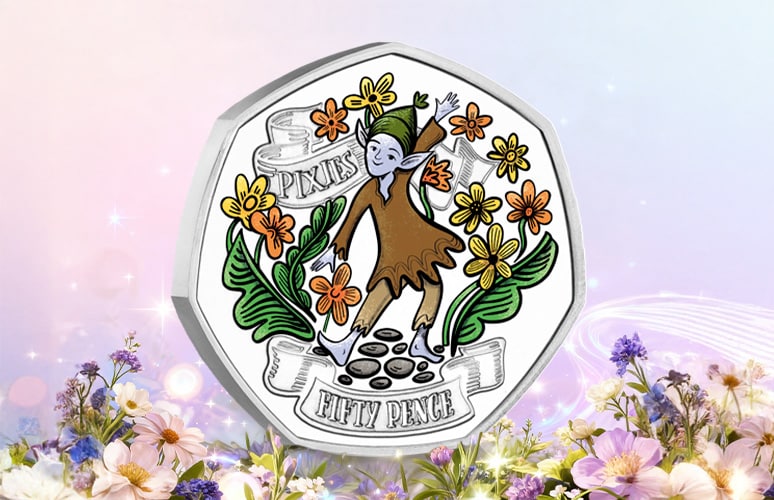
Own the BRAND NEW Myths and Legends 50p Coin Set
Available exclusively from The Westminster Collection in a range of specifications – including the hugely popular BU Colour Edition – the perfect way to appreciate Jo Goodberry’s enchanting 50p designs…
But with edition limits as low as JUST 100 and prices starting for £17.50, only the quickest will be able to guarantee theirs before these coins disappear into legend…
Click here to view the BRAND NEW Myths and Legends 50p Coin Range >>
JUST RELEASED: The 2025 The Snowman™ 50p — The UK’s Most Magical Christmas Tradition Continues!
Every Christmas, a familiar and much-loved figure returns to warm our hearts — The Snowman™.
And this year, he’s back once again to bring festive cheer to coin collectors across the country with the official 2025 The Snowman™ 50p coin from The Royal Mint.
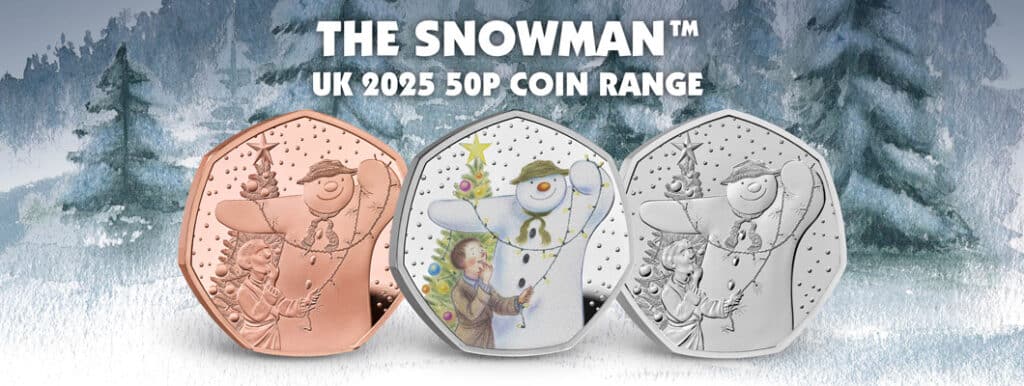
Now in its eighth year, this enchanting series has become one of the most collected and anticipated annual 50p releases — and for many, it simply wouldn’t be Christmas without it!
🎄 A Heartwarming New Design for 2025
The 2025 The Snowman™ 50p features an all-new design by award-winning illustrator Robin Shaw, the creative director behind The Snowman and The Snowdog.
This year’s coin beautifully captures a joyful festive scene as James and The Snowman decorate the Christmas tree with twinkling lights — a moment that perfectly captures the magic, nostalgia, and excitement of the season.
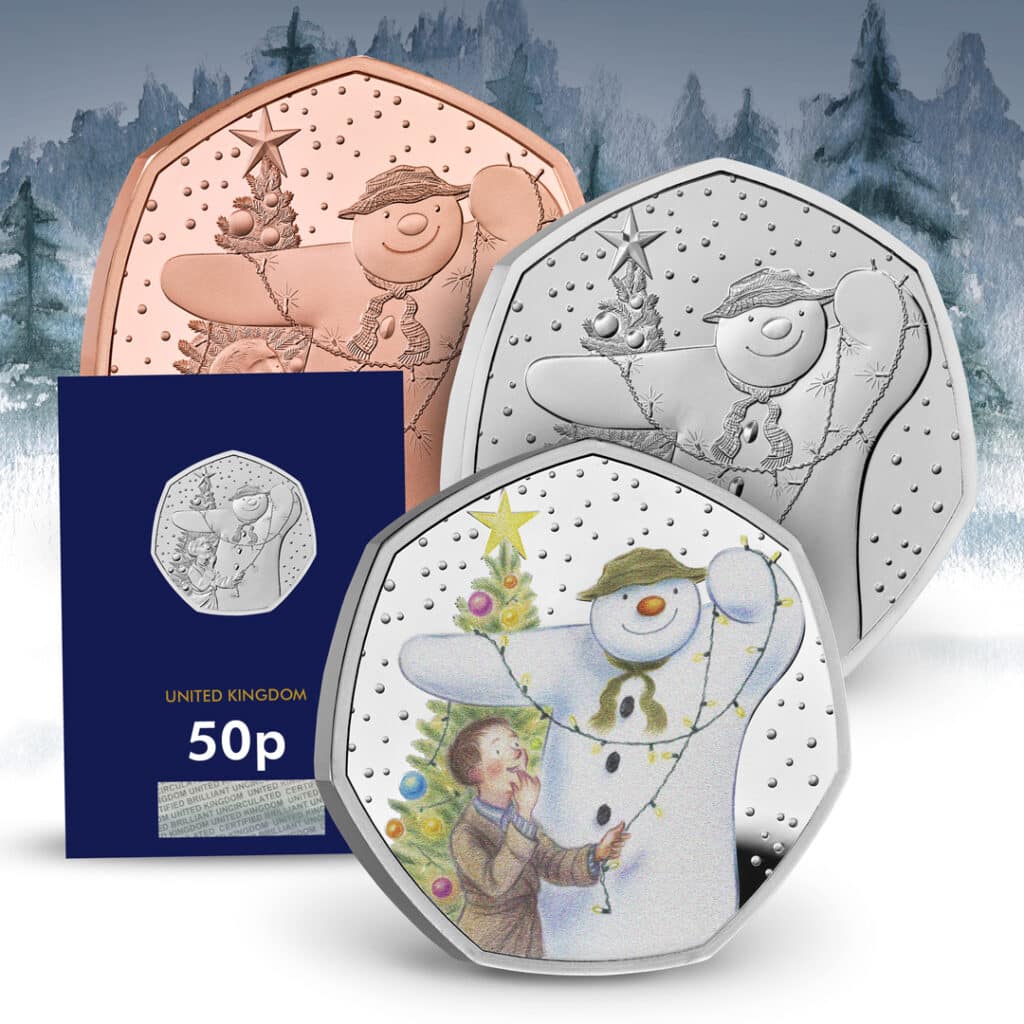
Each coin has been officially struck by The Royal Mint and is available in a range of highly collectible editions, from Brilliant Uncirculated to Silver Proof and Gold Proof.
🪙 A Modern Collecting Classic
Since the very first release in 2018, The Snowman 50p series has become a modern classic in UK coin collecting.
Every edition has celebrated a special moment from Raymond Briggs’ timeless tale — from the pair’s magical flight through the night sky to their joyful snowy adventures — and each new release has proven to be a must-have for collectors.
Previous issues have sold out within days, with early editions now highly sought after on the secondary market.
That’s why many collectors won’t wait a moment longer to secure this year’s coin.
📅 The Snowman™ 50p Collection So Far

Each release tells a new chapter in the story of The Snowman™ — and together, they form one of the most heartwarming collections ever issued by The Royal Mint.
❄️ A Festive Tradition Like No Other
First published in 1978 by the late Raymond Briggs CBE, The Snowman remains one of the most beloved Christmas stories of all time.
The animated film adaptation, first broadcast in 1982, has been shown on TV every Christmas since — and The Snowman 50p coins have become the perfect way for collectors to celebrate that enduring magic.
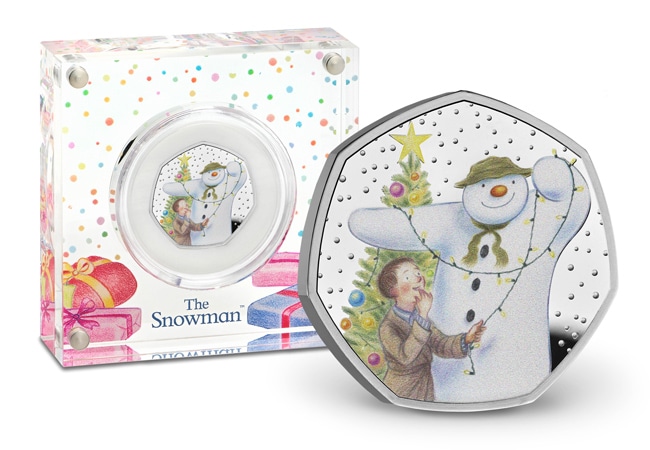
🎁 Secure Your 2025 The Snowman™ 50p Today
Whether you’re continuing your collection or joining the tradition for the first time, this year’s release is a must-have for your Christmas collection.
With strict edition limits and a proven track record of sell-outs, early demand is expected to be extremely high.
Don’t miss your chance to own the 2025 The Snowman™ 50p — a coin that captures the true spirit of Christmas.
👉 Click here to secure yours now and make this festive season one to remember.
Buckingham Palace Authorises First 50p Coin to Honour Queen Elizabeth II’s Birth Centenary
A new Queen Elizabeth II 50p Coin has been officially authorised by Buckingham Palace to mark Her Late Majesty’s Birth Centenary and the closing chapter of a record-breaking reign.
2026 marks 100 years since the birth of our beloved late Queen, Elizabeth II. This historic centenary is a national moment to reflect on her life – and possibly the last chance to commemorate her reign through official coinage. You can do that today by owning the new official Centenary 50p, giving you a head start on other collectors who may not hear about this release before the anniversary date – 21st April 2026.
A Rare Tribute in Gold
This Centenary 50p Coin features a specially commissioned portrait of Queen Elizabeth II, finished in signature gold ink – a detail rarely seen on royal coins. Elegant and dignified, this finish pays tribute to the Queen’s extraordinary life and service, while ensuring this issue stands out in any collection.
Crucially, it is strictly limited to just 50,000 coins worldwide, making it one of the most sought-after royal releases of recent years.
The Closing Chapter of a Numismatic Legacy
For over 70 years, the Queen’s reign was chronicled through coins – from her first appearance on UK currency in 1953 to commemoratives marking her milestones. This Centenary 50p Coin represents the final chapter in Her Majesty’s numismatic story, making it an unmissable addition for serious collectors.
With global demand anticipated to reach unprecedented levels, early reservation is the only way to avoid missing out.
Reserve Yours Today – Just £4.99 (+p&p)
Right now, you can be among the first to secure the Queen Elizabeth II Centenary 50p Coin for just £4.99 (+p&p).
Even better, this coin is the first release in a new series issued to mark the centenary – meaning your order begins an historic collection.
But please note: to guarantee your coin, we must receive your order before 15th October.
Click here to reserve the Queen Elizabeth II Centenary 50p Coin

